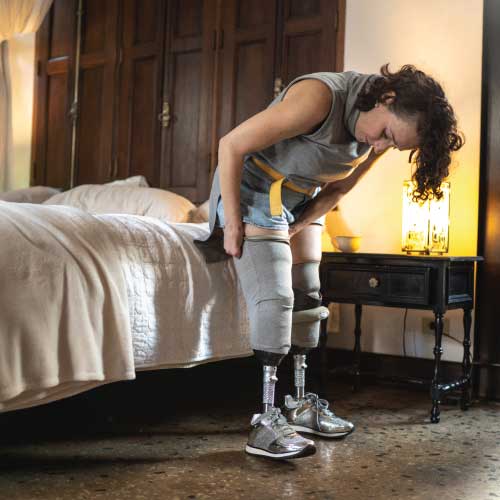Scientists Regrow Frogs’ Amputated Limbs
Although some creatures, like lizards, starfish, and crabs, can fully regenerate some lost limbs, African clawed frogs, like humans, cannot. However, a recent development showed that scientists had gotten frogs with amputated limbs to grow new, leg-like limbs in the laboratory, and this discovery might be the key to helping humans regrow limbs.

Researchers, led by Nirosha Murugan, at Tufts University soaked the frogs' residual limbs in a five-drug cocktail for 24 hours. The formula was designed to instruct cells to multiply.
Within 18 months, the frogs grew leg-like limbs and even used them for swimming. The leg-like limbs were fully functional, complete with bones, vasculature, nerves, and new skin. However, their new limbs had no toenails or webbing between the toes.

Limb growth at the amputation site over a period of 18 months. The images were of frogs that didn’t receive treatment (ND), silk hydrogel alone (BD), and gel with the five-drug cocktail (MDT). Image: Science Advances
The silk-based gel treatment contained compounds that are part of normal development, like anti-inflammatories, collagen inhibitors (to prevent scarring), and growth hormones. Scientists then applied the cocktail to the frogs' amputated limbs via a silicone cap called BioDome.
According to a report by the Wall Street Journal, two of the researchers who worked on the study, David Kaplan and Michael Levin, co-founded a company to develop the BioDome technology for clinical application.
Will humans be able to regrow limbs in this lifetime?
According to Murugan, it'll take decades to regrow missing human limbs successfully, but she's optimistic that she'll live to see it. As of this writing, she is 31.
Others, however, are less optimistic.
In an interview with Insider, University of Kentucky regeneration lab head Ashley Seifert said that she doesn't think she'll see humans regenerate entire limbs in her lifetime. Seifert is 45.
University of Nevada regeneration research lead Kelly Tseng declined to make any predictions. This is because it's a complex topic to study, even though it has been studied for over 300 years.
If, however, regenerative therapies turn out to work for humans, experts are optimistic that they might help regrow organs. And even if they're not close to the originals, regenerating limbs could help amputees with phantom limb pain.
Different methods regrow lab-animal limbs
Scientists have already been regrowing animal limbs for decades. The earliest recorded effort was by zoologist Marcus Singer in the 1950s. Singer partially regenerated frog limbs by rerouting the sciatic nerve.
In 2012, researchers at Tulane University had some success regrowing mouse limbs using a protein patch to stimulate bone development. Although the mice grew new bones, their new limbs did not form joints, just like Murugan's frogs.
And in 2013, researchers at the University of Minnesota used stem cells to produce frog limbs with appendages similar to toes, just like those in Murugan's study.
Next steps
For now, the Tufts University researchers are moving on to mice, using the new, five-drug regrowth cocktail. They previously used the BioDome technology on mice but with a different mixture. We will soon find out if this new one works on mice, too.
What do you think of this development? And do you think we'll be able to witness humans regenerating missing limbs in just a few decades?











































































